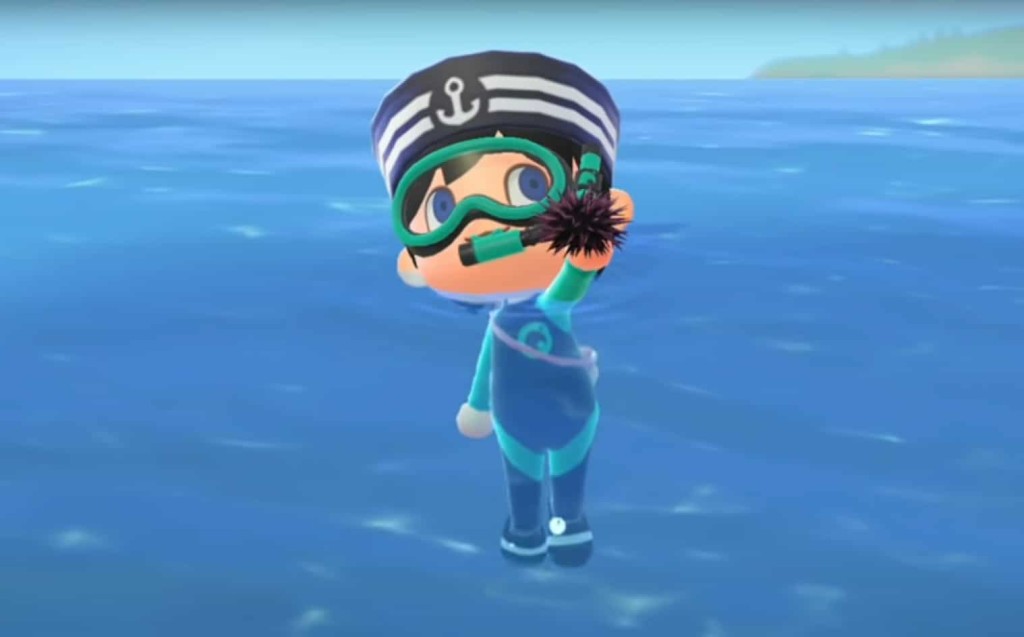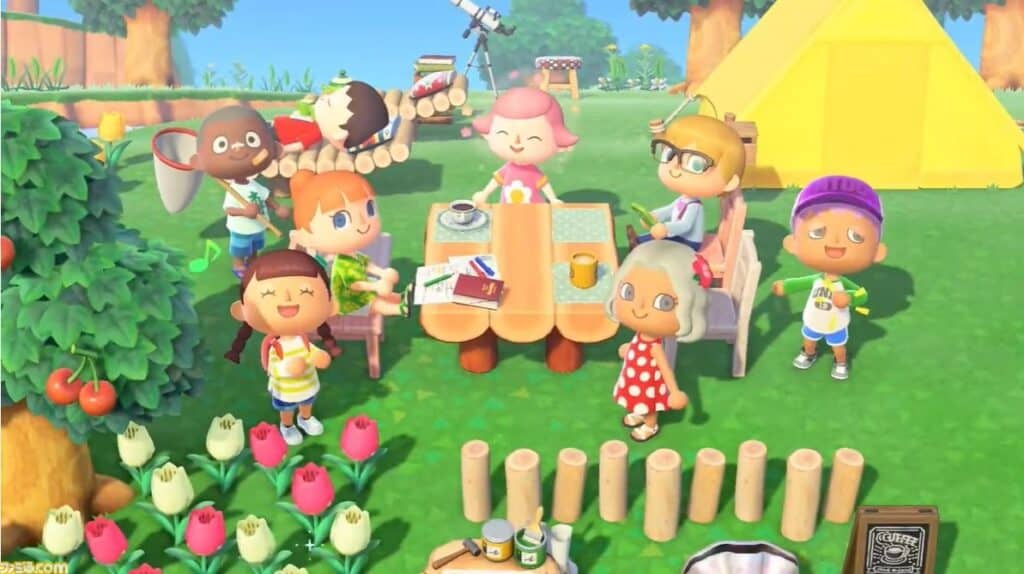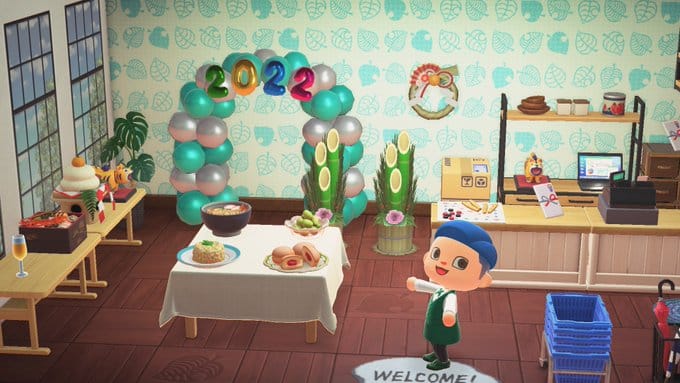Did you know that Animal Crossing: New Horizons allows you to swim and dive around the unexplored waters around your island where you’ll be able to find Sea Creatures that have been swimming around your island all this time as well as meet Pascal the otter.
So before we get to getting wet and wild we’re gonna need a Wet Suit which is required for us to start our waterside adventures.
Where to Buy the Animal Crossing: New Horizons Wet Suit
Here are the two ways one can get a Wet Suit:
- The Horizontal-striped Wet Suit can be found at your closest Nook’s Cranny’s cabinet where you can buy it for 3,000 Bells.
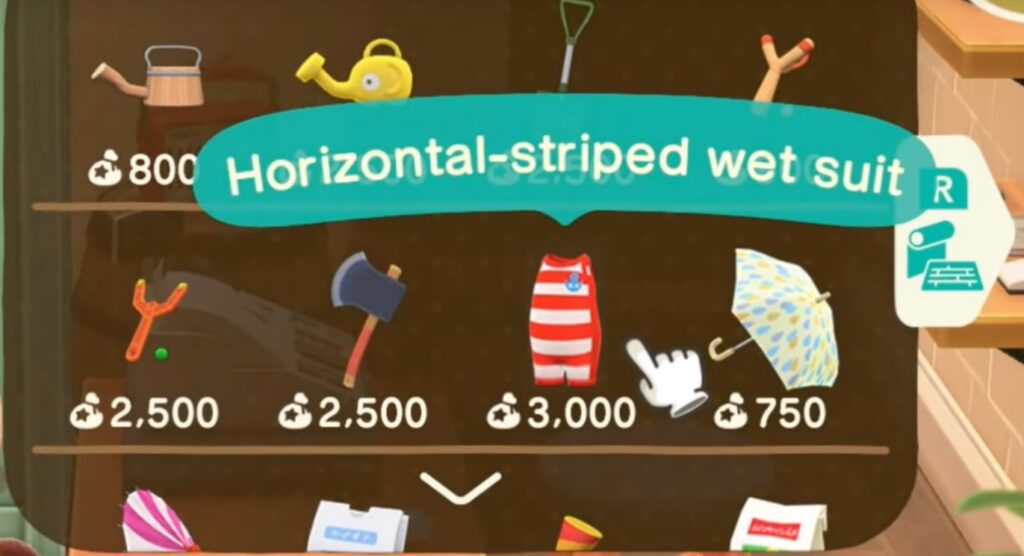
- For the online experience, the Leaf-print Wet Suit can be bought via Nook Shopping’s Special Goods.
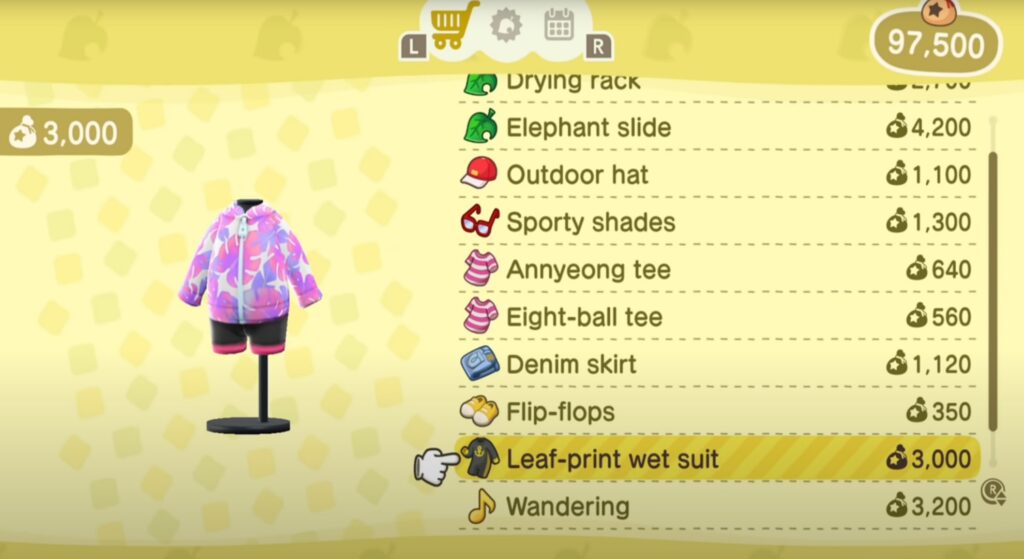
- For the Nook Miles redemption route you can purchase the Nook Inc. Wet Suit for 800 Nook Miles. Do take note that for Nook Inc. Novelty items, they will always be mailed to you the following day you sign-in to the game.
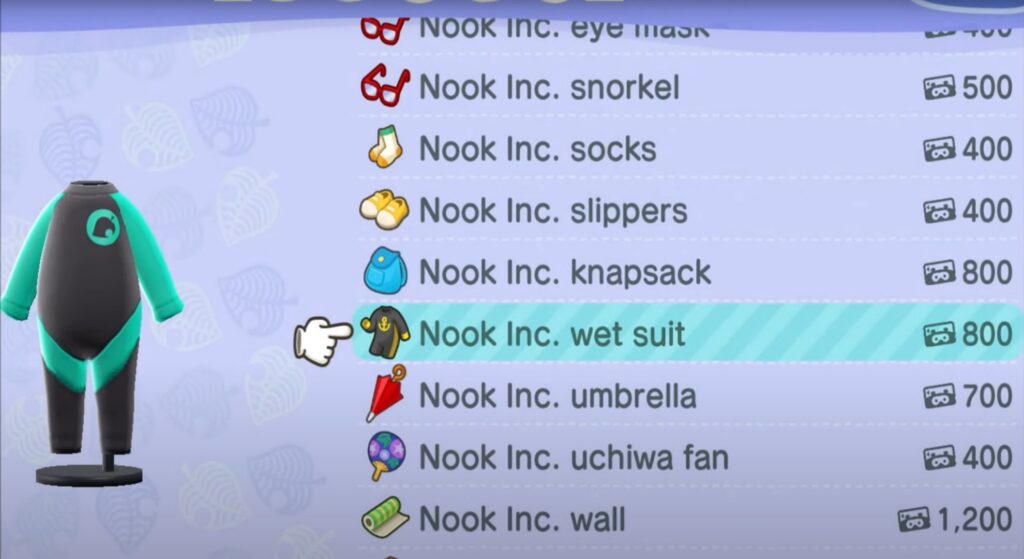
How to Swim in Animal Crossing: New Horizons
Now that we have our Wet Suit of choice, it’s time to start our adventures at sea.
First things first, don’t forget to wear your Wet Suit of choice by finding it in your inventory and selecting the “Wear” option.
You can also get some other swimming clothing equipment like the scuba mask which you can wear while swimming but unfortunately serve no purpose when it comes to Animal Crossing: New Horizons swimming and diving mechanics.
So let’s get our butts into the water and see where we go from there. So to enter the water you just need to press “A” when you’re next to the sea.
Here are your entry points for the water:
- You can enter from the beach.
- Jump from the pier.
- Jump from the airport.
- Jump from a rock.
For those who want to look a little flashy going into the sea with a front-flipping cannonball. Then you have to be sprinting by holding the “B” button and hit “A” just before you reach the end of your platform.

So Timmy will be the one giving you the tutorial on how you’re gonna use your new Wet Suit/s.
Swimming:
- Pressing “A” allows you to do a breaststroke.
- Holding “A” allows you to swim at a normal speed.
- Holding the left joystick on your controller allows you to swim at a slow speed.
- Rapidly pressing “A” on your controller allows you to swim at a high speed.
- An important thing to note is that there is a swimming boundary indicated by a net.
- Swam too far? Don’t worry, there’s a Rescue Service app from your Nook Phone just for that and they’ll even fly you back to your desired location on the island. It’ll cost 100 miles per rescue though so do take that into account.
Diving:
- For diving you will need to press “Y” to dive. When you dive, you’ll be under the sea for about 10 seconds before automatically going back up the water for air.
- You can press “Y” while underwater to resurface manually.
Animal Crossing: New Horizons’ Sea Creatures
So a good way to spend some of your leisure time in the water would be to look for Sea Creatures that live beneath the ocean floor. The Sea Creatures you collect can be donated to the Museum or sold to Nook’s Cranny.
How to Catch Sea Creatures
To find a sea creature, be on the lookout for some bubbles or a shadow on the water surface and dive near it or on top of it. Be careful though as some of them can move and are sometimes real quick to boot.
If the shadow starts to run away, you can chase after it by tapping “A” while you’re below the water, and press “A” again when you’re over the shadow to capture the sea creature.
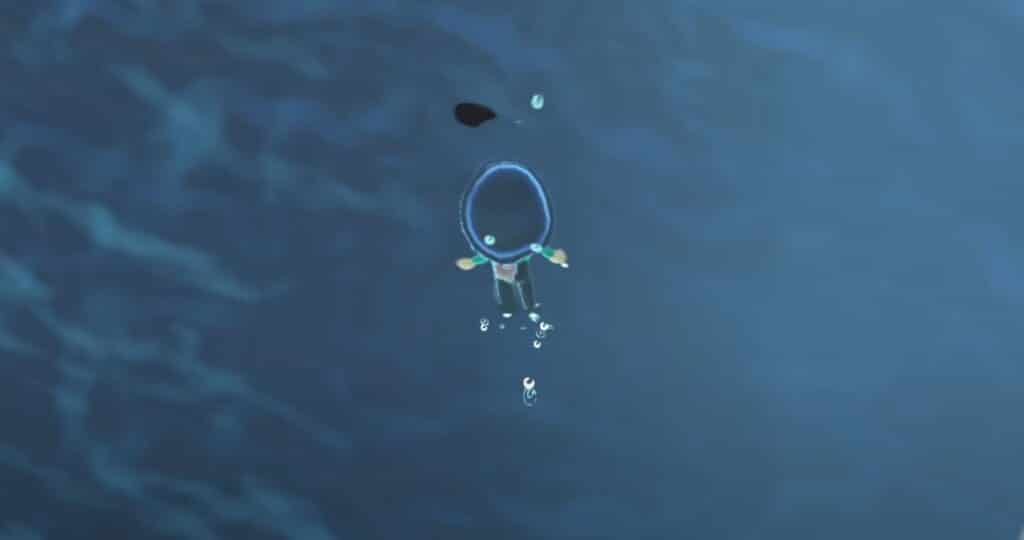
An important thing to note is that you can’t access your pocket while you’re out in the water except in the event wherein your pocket is full and you will need to swap out your newly-caught sea creature with another sea creature that’s occupying your pocket space. In the event where there is no sea creature in your pocket then you have no choice but to set it free.
You can manually release sea creatures you’ve caught but you need to go back to the shore and back on land in order to release them.
List of Sea Creatures
| Sea Creature | Price | Active Time | Seasonality (North) | Seasonality (South) |
|---|---|---|---|---|
| Abalone | 2,000 | 4 p.m. – 9 a.m. | June – January | December – July |
| Acorn Barnacle | 600 | All Day | All Year | All Year |
| Chambered Nautilus | 1,800 | 4 p.m. – 9 a.m. | March – June, September – November | September – December, March – May |
| Dungeness Crab | 1,900 | All Day | November – May | May – November |
| Firefly Squid | 1,400 | 9 p.m. – 4 a.m. | March – June | September – December |
| Flatworm | 700 | 4 p.m. – 9 a.m. | August – September | February – March |
| Gazami Crab | 2,200 | All Day | June – November | December – May |
| Giant Isopod | 12,000 | 9 a.m. – 4 p.m., 9 p.m. – 4 a.m. | July – October | January – April |
| Gigas Giant Clam | 15,000 | Al Day | May – September | November – March |
| Horseshoe Crab | 2,500 | 9 p.m. – 4 a.m. | July – September | January – March |
| Lobster | 4,500 | All Day | April – June, December – January | October – December, June – July |
| Mantis Shrimp | 2,500 | 4 p.m. – 9 a.m. | All Year | All Year |
| Moon Jellyfish | 600 | All Day | July – September | January – March |
| Mussel | 1,500 | All Day | June – December | December – June |
| Octopus | 1,200 | All Day | All Year | All Year |
| Oyster | 1,100 | All Day | September – February | March – August |
| Pearl Oyster | 2,800 | All Day | All Year | All Year |
| Red King Crab | 8,000 | All Day | November – March | May – September |
| Scallop | 1,200 | All Day | All Year | All Year |
| Sea Anemone | 500 | All Day | All Year | All Year |
| Sea Cucumber | 500 | All Day | November – April | May – October |
| Sea Grapes | 900 | All Day | June – September | December – March |
| Sea Pig | 10,000 | 4 p.m. – 9 a.m. | November – February | May – August |
| Sea Pineapple | 1,500 | All Day | April – August | October – February |
| Sea Slug | 600 | All Day | All Year | All Year |
| Sea Star | 500 | All Day | All Year | All Year |
| Sea Urchin | 1,700 | All Day | May – September | November – March |
| Seaweed | 600 | All Day | October – July | April – January |
| Slate Pencil Urchin | 2,000 | 4 p.m. – 9 a.m. | May – September | November – March |
| Snow Crab | 6,000 | All Day | November – April | May – October |
| Spider Crab | 12,000 | All Day | March – April | September – October |
| Spiny Lobster | 5,000 | 9 p.m. – 4 a.m. | October – December | April – June |
| Spotted Garden Eel | 1,100 | 4 a.m. – 9 p.m. | May – October | November – April |
| Sweet Shrimp | 1,400 | 4 p.m. – 9 a.m. | September – February | March – August |
| Tiger Prawn | 3,000 | All Day | June – September | December – March |
| Turban Shell | 1,000 | All Day | March – May, September – December | Mach – June, September – November |
| Umbrella Octopus | 6,000 | All Day | March – May, September – November | March – May, September – November |
| Vampire Squid | 10,000 | 4 p.m. – 9 a.m. | May – August | November – February |
| Venus’ Flower Basket | 5,000 | All Day | October – February | April – August |
| Whelk | 1,000 | All Day | All Year | All Year |
Finding Pascal to Trade
Whenever you go looking for Sea Creatures and you find Scallops, then expect to find Pascal, a red otter who absolutely loves Scallops. He’ll appear nearby and will ask you to trade the Scallops you find for another item. He’ll only appear once a day though so he will only ask you for your first Scallop per day.
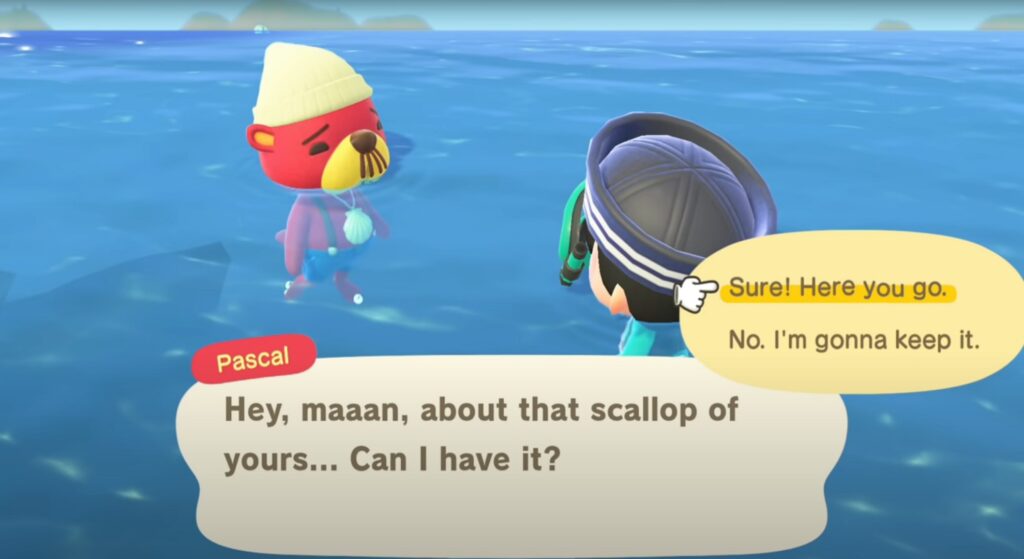
Pascal will give you DIY recipes for some very exquisite Mermaid Furniture, Pearls, and Mermaid clothing. I’m sure those of you who’ve dreamt of a mermaid-themed room will be prioritizing Scallop hunting.
For more about Animal Crossing: New Horizons you can check for them here.
Here are other notable guides from other games:


